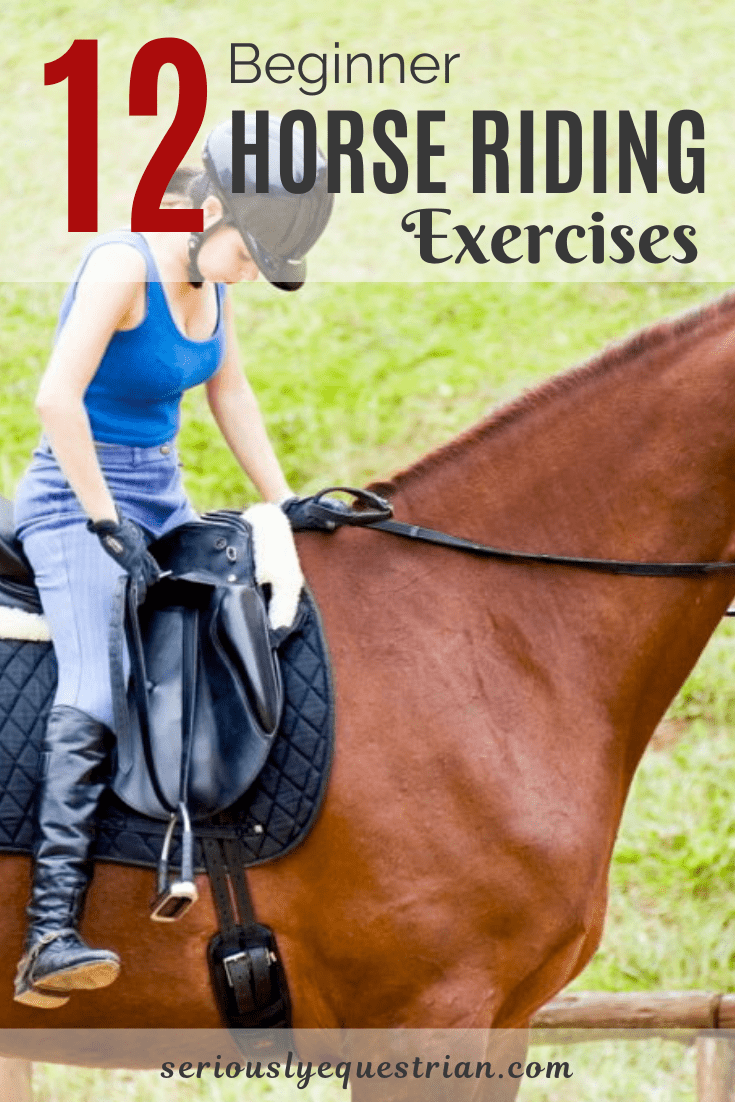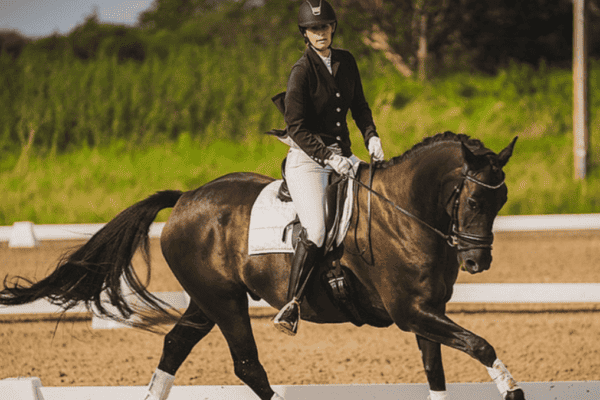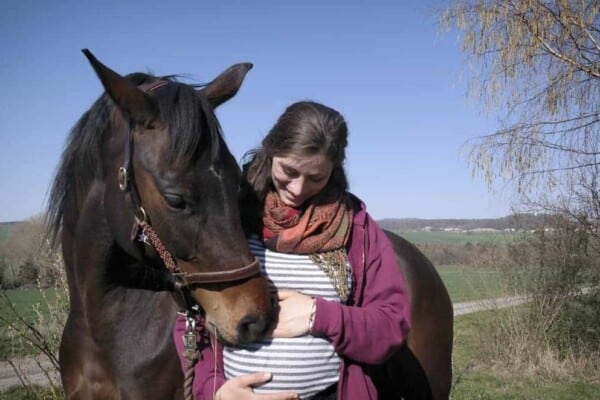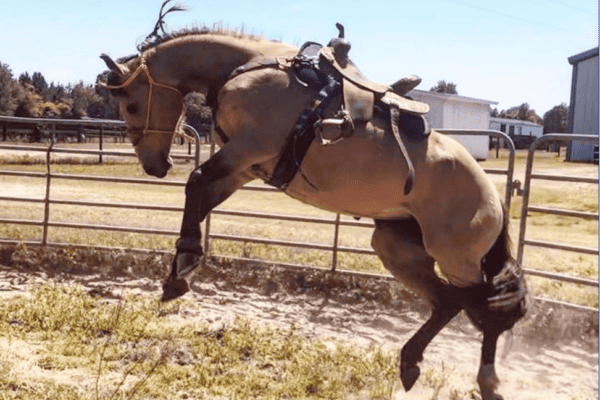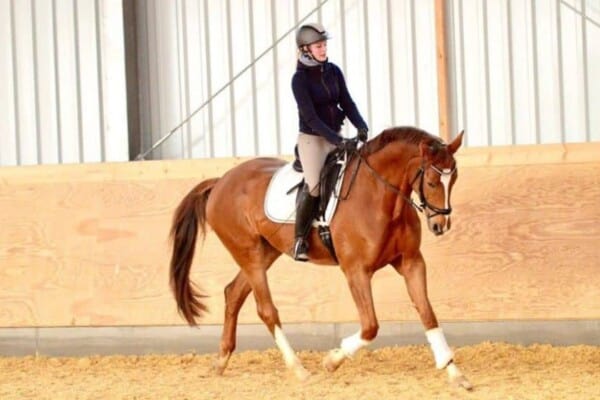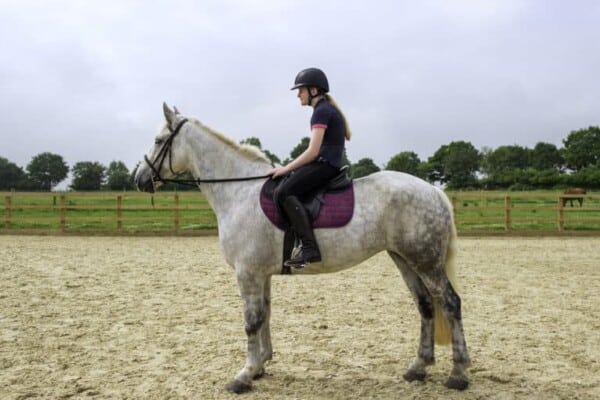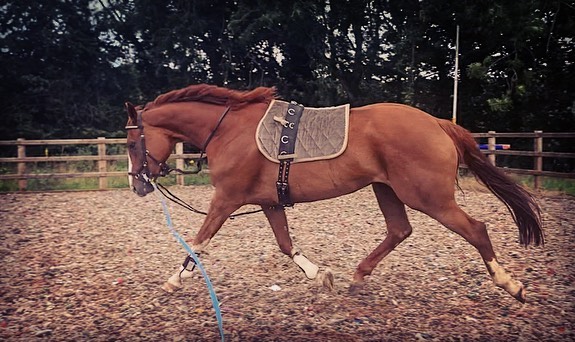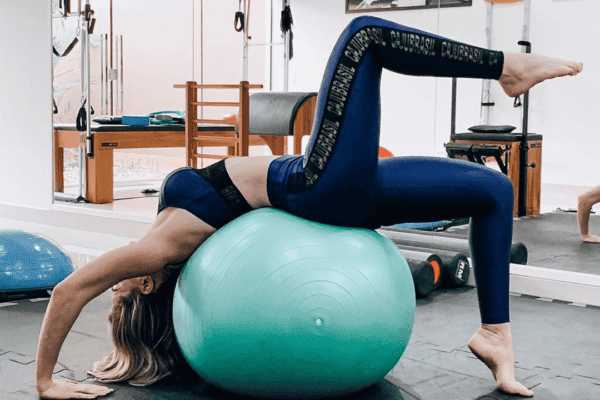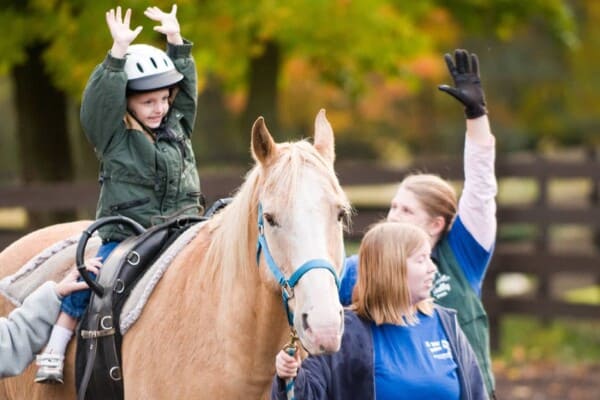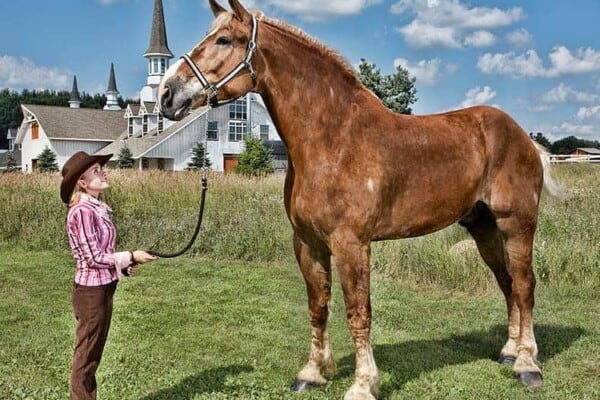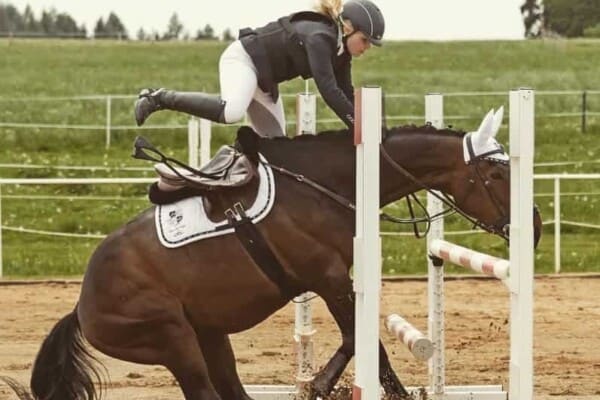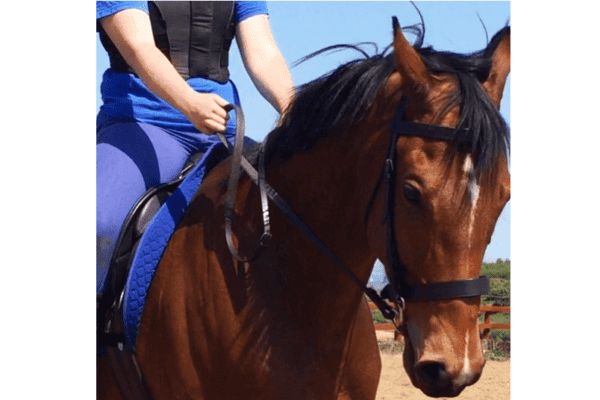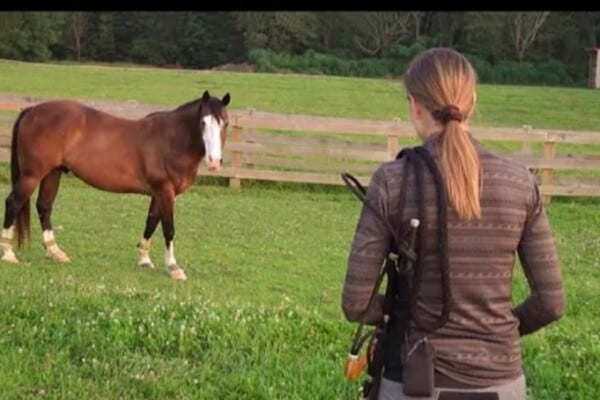Horse riding is a unique physical challenge, it tests out every fibre of your being and requires strength, flexibility and coordination. As every good rider knows, there are exercises which you can do both on and off the horse to help improve core strength, balance and technique. We take a look at some of the best training exercises to help you on the road to equestrian skill and prowess.
Top 12 Beginner Exercises
1. Rotational arm exercises – usually these are performed during a lunge lesson as the rider can abandon the reins and concentrate on what they are doing without worrying about the horse. Rotating the arms in a circular motion with a front to back rotation from the shoulder can help improve upper body posture and balance. It will bring the shoulders back above the hips and open out the chest, particularly useful for those who are used to being slumped over a desk. You can do this exercise off the lunge one arm at a time by transferring the reins into one hand but only on an appropriate horse.
2. Hand behind the back – extend the arm out to the side with a good stretch and then place it in the small of your back with the palm facing outwards. This is a particularly good exercise in sitting trot on the lunge as it promotes balance and helps keep a good posture. It also allows the rider to focus on feeling the movement of their lower back which is where the shock absorbency comes from
3. Hand on the head – one arm at a time, both together if you are feeling brave. This exercise helps the rider lengthen the spine without stiffness or a fixed position allowing the rib cage to stretch and promotes the development of core abdominal muscles
4. Airplane body twists – when riding on the lunge free of the reins, put both arms out to the side like an airplane and then gently rotate the body round to the side until your chest is parallel with the horse. Make sure the seat and hips do not move, the rotation is entirely through the upper body. This promotes balance and mobility through the upper body whilst the seat remains central
5. Lose the stirrups – initially, a great exercise for beginners and novices is to kick free their stirrups and regain them without looking down just in the walk. You don’t need to be on the lunge to do this. It will stand you in good stead later on as every rider loses their stirrups at some point. The stirrups will lie parallel with the horse’s side once the foot is absent and so the rider needs to turn the toe in slightly and move the iron out so that it is facing forward. It can be a great confidence giver for new riders who have never experienced riding without stirrups at all and before they encounter the challenges of a lunge lesson
6. Ride with no stirrups – depending on the rider’s ability, this can be done either on the lunge or within the confines of a lesson when the rider is in control of the horse. It is actually beneficial not to introduce this too early in a rider’s career as it is challenging and severe loss of balance will only cause riders to grab onto and balance on the reins. Short periods of work without stirrups in walk and trot are best as they are taxing and tiredness just promotes loss of balance and will encourage the rider to grip, so little and often is best. It is essential to remember not to hold your toe up and leg in riding position if the stirrups are absent; this may be contrary to what you read on other sites and even in opposition to what your instructor is telling you! The leg should be loose as the stirrup is absent, the perch for the toe has gone. If the rider forces their leg into a riding position, not only will they be unable to use it effectively to ask the horse to go forward but the hip will close and the knee tighten, pushing the rider up out of the saddle. Most importantly, the closed hip will prevent the lower back absorbing the movement of the horse with ease and flexibility so you will just bounce – no good for you or the horse’s back.
7. Lifting the legs – this can be done on the lunge or free in the school if the rider is secure enough and the horse is predictable and quiet. Quit the stirrups and gradually lift the legs, one at a time to start with moving them up slowly from the hip whilst bending the knee. This is a great exercise for riders who tend to pitch forward and sit on their fork and can help re-position the rider onto the correct part of their seat. Be careful not to dig the horse in the side with your heels by mistake.
8. Rolling toe circles – with the feet free of the stirrups, rotate the feet from the ankles first clockwise and then anti-clockwise. This promotes flexibility of the ankle joint, essential for both dressage and short stirrup jumping work later on.
9. No stirrups no reins – quite the challenge and best confined to the lunge for obvious reasons, this is a great opportunity to work on all aspects of your technique and balance. Whilst hard work, taking the reins away as well as the stirrups actually prevent the rider from compensating with their hands in response to the security they feel they have lost from the lack of stirrups. A quiet, comfortable horse is best for this role with level, fairly flat paces. Horses with more expressive movement and bigger gaits can be used later on to develop more feel and balance.
10. Around the world – almost an extinct practice in the UK now due to Health and Safety legislation, this exercise was always a pony club favourite in the old days. Sit astride your horse in the normal way and quit your stirrups. Swing your leg over the horse’s neck being careful not thump him on the head, both legs should now be on the same side – the rider can hold the pommel and cantle of the saddle for stability. Swing your other leg over the horse’s quarters so you should now be facing the rear as if you were riding backwards. Carry on round until you finish facing forward with your legs astride the horse.
11. Simon says – that old favourite, pick one of the pupils and get them to call out different exercises that everyone has to copy. It is great fun for children but most adults secretly enjoy this too!
12. Obstacle cone racing – using trot and perhaps taking away the rider’s stirrups, ask them to proceed down a line of cones weaving in and out. This is great to encourage fun and a competitive spirit but in order to promote good riding technique and position, don’t just reward the fastest rider but give a ribbon to the rider showing the best skill and correct riding.


